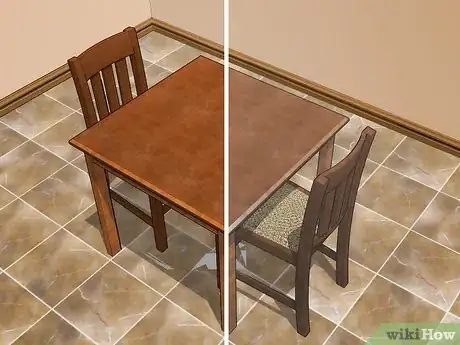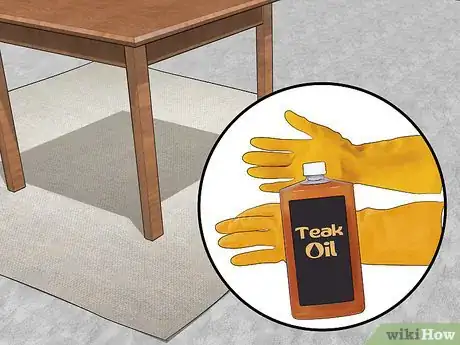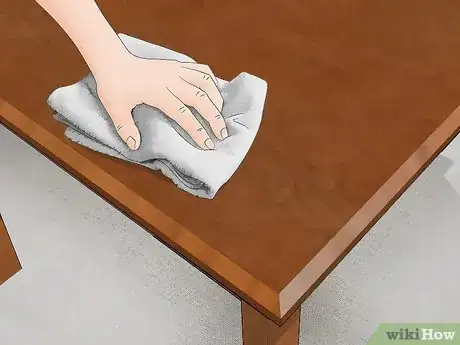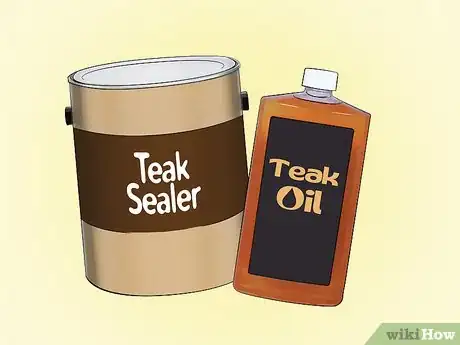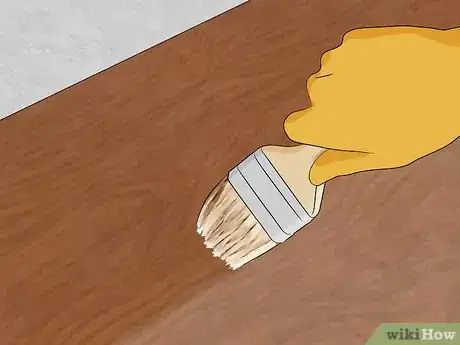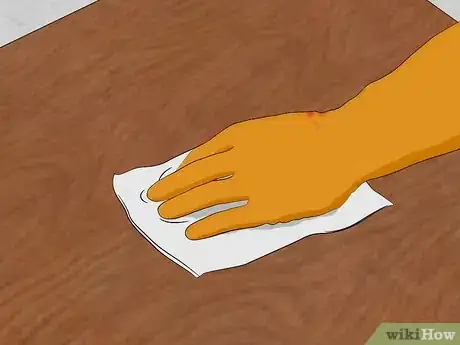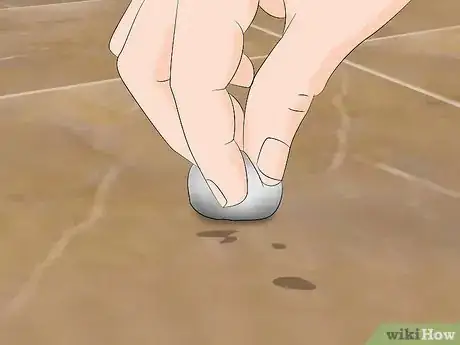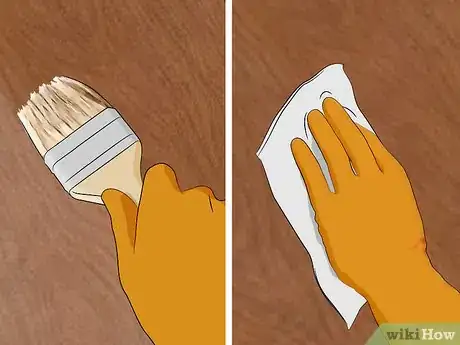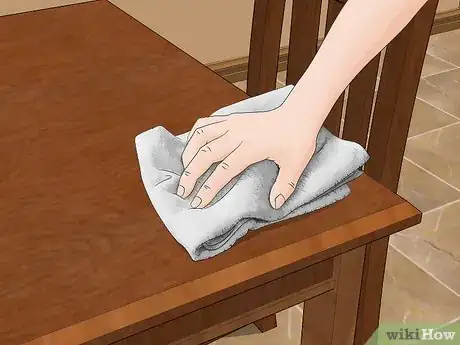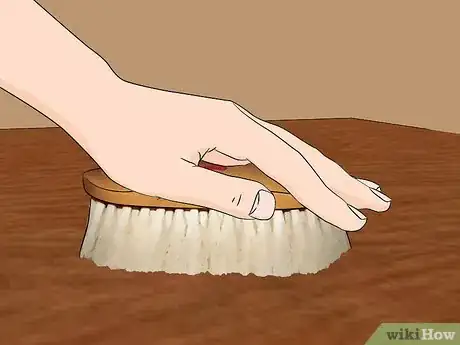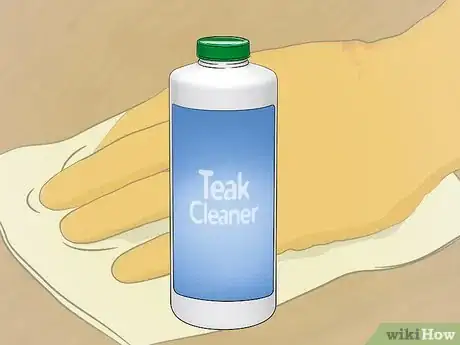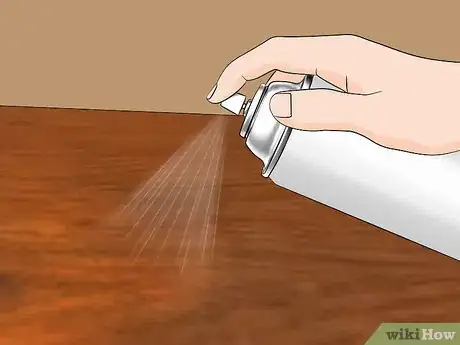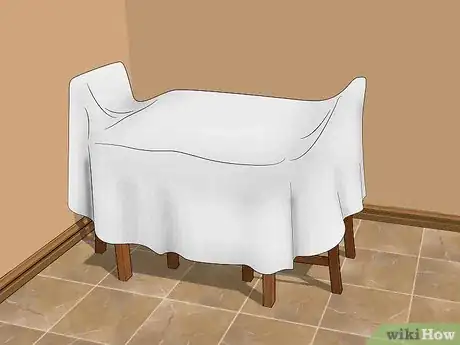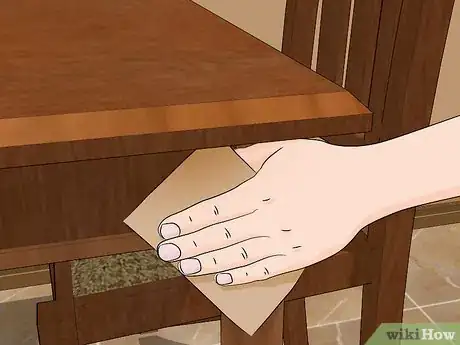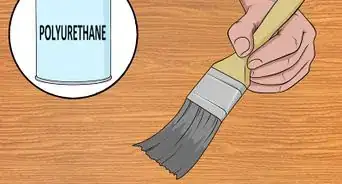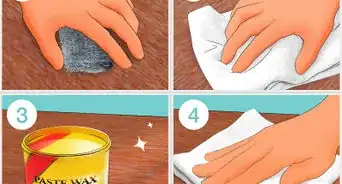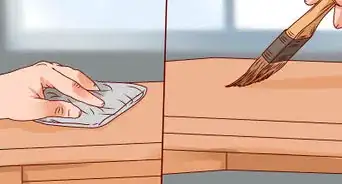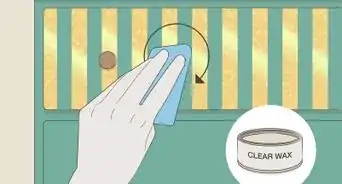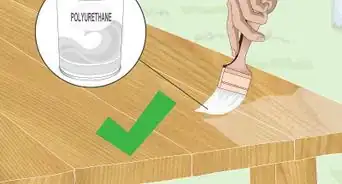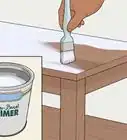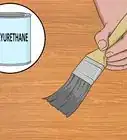This article was co-authored by Alicia Sokolowski. Alicia Sokolowski is a Green Cleaning Specialist and the President and co-CEO of AspenClean, a green cleaning company in Vancouver, British Columbia. With over 17 years of experience, Alicia specializes in creating a healthier, green alternative to chemical-based cleaning products and services. AspenClean develops and manufactures its own line of 100% Natural, EcoCert® certified, and EWG verified™ cleaning products. AspenClean’s glass cleaner was voted Parent’s Green Pick 2020 by readers of the Parents’ magazine. Alicia holds a CPA designation and a Bachelor’s degree in Commerce and Finance from the University of Toronto.
There are 8 references cited in this article, which can be found at the bottom of the page.
wikiHow marks an article as reader-approved once it receives enough positive feedback. In this case, 100% of readers who voted found the article helpful, earning it our reader-approved status.
This article has been viewed 198,687 times.
Teak is one of the most durable woods and does not need any special treatment to maintain its strength. However, if left untreated, teak furniture will fade to a light brown, then a silvery grey appearance. Oiling teak regularly will preserve its original golden brown appearance. Note that oil is not recommended for outdoor teak furniture or furniture in damp environments, as the oil encourages mildew growth.[1]
Things You Should Know
Steps
Oiling Teak Furniture
-
1Understand the costs and benefits of oiling. Applying teak oil maintains the furniture's glossy, brown appearance, and may make scratches and other damage less visible if it occurs, since the surface will have a similar appearance as the inner wood.[3] However, once oiled, the furniture may become dependent on repeated oiling, at least once every three months, to maintain its appearance. If, however, the furniture has never been oiled, it can remain sturdy for decades.
- Warning: Teak furniture manufacturers strongly recommend avoiding oil of outdoor furniture or furniture that is kept in damp environments. This is due to the increased chance of mildew brought on by creating an environment likely to promote the growth of mold colonies.
-
2Prepare your tools. Place a cloth or newspaper beneath the teak furniture to catch spills. Put on gloves to avoid getting oil on your hand, which may cause skin irritation. While most teak oils are not highly toxic, long-term exposure may cause health problems, so working in a well-ventilated area is recommended.[4] Keep teak oil away from heat sources, as it can be highly flammable. Select several clean, disposable rags to use for oiling your furniture.Advertisement
-
3Clean the furniture and let dry if necessary. If the furniture is cleaned regularly, dust it thoroughly. If it appears dirty, feels sticky, or has grime buildup, wash with water and mild soap, or use a specialized "teak cleaner." See the care section for more detail.
- Warning: Dry the furniture after cleaning and leave it for 24–36 hours to remove all moisture before applying the oil. Even if the surface moisture has dried, moisture just below the surface could be trapped by the oil, altering color and longevity.[5]
-
4Select a "teak oil" or "teak sealer" product. The "teak oil" products used for this purpose are not actually made from the teak tree, and composition can vary between them. Of the common ingredients, tung oil may be more effective than linseed oil.[6] Teak oil sometimes comes with an artificial color or an additional sealant product mixed in, so read the label carefully before selecting. Teak sealer typically requires less frequent application than teak oil, but otherwise operates in a similar fashion.
-
5Use a paint brush to apply teak oil. Cover the teak in even strokes with a wide brush. Continue to apply the oil until the furniture has a matte appearance and cannot absorb any more.
-
6Wait fifteen minutes, then wipe down with a cloth. Allow the oil to penetrate the wood. You may notice the surface oil changing to a tacky consistency as the wood beneath it is absorbed. Once this occurs, or after fifteen minutes, wipe the furniture with a clean rag, taking care to remove all excess oil.[7] A second clean rag can be used to buff the surface once it is dry.
-
7Wipe up spills and drips with mineral oil. Moisten a clean cloth with mineral oil to pick up excess oil and drips. Teak oil may stain other furniture or floors if not removed immediately.
-
8Reapply regularly. Your furniture will now fade in color if oil is not reapplied. Reapply oil once every few weeks or months, whenever the color and sheen fades. You may apply an additional coat to deepen the color, but only apply a new layer once the furniture surface is completely dry to the touch.
Caring for Teak Furniture
-
1Simply dust occasionally if you enjoy the natural color. There is no harm done to your furniture if you let it fade to a light brown, and eventually to an aged silvery color. If you enjoy this appearance or the low maintenance, just dust your teak furniture regularly, and wash it occasionally if dirt or moss builds up.
- During the initial weathering, your teak furniture may look uneven in color or slightly cracked. This should even out over time.
-
2Clean the teak furniture instead if you would like to restore its color. You may scrub the furniture with a soft-bristled brush and warm soapy water to temporarily restore a slightly brighter color.[8] Avoid hard bristles or high-pressure hoses, which may damage the teak.
-
3Use teak cleaner for more significant cleaning. A specialized cleaning product, called teak cleaner, can be used if soap and water is not enough to remove dirt or brighten the furniture's color.[9] There are two major types of teak cleaner available:[10]
- One part teak cleaner is safe and easy to apply. Scrub it in with a soft-bristled brush, for approximately 15 minutes. Gently rinse with clean water, using an abrasive cleaning pad or bronze wool to open up the pores of the wood and remove the cleaner. Avoid steel wool, which may discolor the teak.
- Two part teak cleaners are harsher on your teak's lifespan and texture, but operate faster and may dissolve tough grime. Apply the first part, an acid, and wait according to the instructions on the packaging. Scrub in the second part, which neutralizes the acid, making sure to cover the furniture thoroughly.
-
4Apply a clear protective coat to avoid damage. If your teak furniture is heavily used or kept in an area with energetic activity, you may wish to protect it from stains in advance. A clear, protective sealant can be applied anytime the teak is dry to form a hard layer over the teak's surface. The name and application method of these products vary between brands. Look for "teak protectors" or "clear coat" for teak, and follow the instructions on the packaging.
- The use of a sealant and oil at the same time is controversial, as some believe them to have negative effects in combination. Some cleaning product manufacturers, however, recommend both.
-
5Consider covering the teak when not in use. One of teak's attractions is its extreme durability, which makes protection usually unnecessary. However, a porous cover such as canvas may make cleaning easier. Never use a plastic or vinyl cover, which traps moisture on the furniture.
-
6Lightly sand off stains. Some stains, such as red wine or coffee, may be difficult to remove by washing. Remove the top layer of wood instead with medium-grain sandpaper, then create a smooth surface with fine-grain sandpaper once the stain is gone. This will likely brighten the furniture's appearance where sanded, as the interior of the teak still contains natural oils.
Community Q&A
-
QuestionCan I use olive oil instead?
 Community AnswerOlive oil works extremely well if you don't have what you intended to use.
Community AnswerOlive oil works extremely well if you don't have what you intended to use. -
QuestionMy teak cabinet will be used outdoors and positioned in an outbuilding that may take on water during heany rains. The article warns about oiling outdoor items and wet environments. Any suggestions?
 Community AnswerI have used tung oil and citrus solvent on my pine bee hives that are outside. It needs to be reapplied after a few years, but works well. I imagine it might be a good solution for your outdoor teak. Make sure you apply as much as the wood will absorb and rub off the rest. I find new pine usually takes three coats.
Community AnswerI have used tung oil and citrus solvent on my pine bee hives that are outside. It needs to be reapplied after a few years, but works well. I imagine it might be a good solution for your outdoor teak. Make sure you apply as much as the wood will absorb and rub off the rest. I find new pine usually takes three coats. -
QuestionHow do I maintain a teak bench in a shower?
 Community Answer1. Remove soap scum, mildew, hair, etc. Scrub with enzyme cleaners or baking soda/vinegar to remove dark water stains. 2. Once dry, hand sand progressing from medium to fine sand paper, remove dust between grades. Sanding blocks work well for overall coverage combined with scourge pads/sturdy bristle brush between slats. 3. Wipe down removing any dust, once dry (36-48 hrs) apply a thin layer of your preferred oil with a brush or lint-free cloth, let soak for at least 20 mins before applying second coat. 100% tung or butcher block oil repel but avoid polymer-based products, which can trap moisture leading to wood rot. 4. Allow to dry (24-48 hrs) before use. 5. Repeat at least once a year.
Community Answer1. Remove soap scum, mildew, hair, etc. Scrub with enzyme cleaners or baking soda/vinegar to remove dark water stains. 2. Once dry, hand sand progressing from medium to fine sand paper, remove dust between grades. Sanding blocks work well for overall coverage combined with scourge pads/sturdy bristle brush between slats. 3. Wipe down removing any dust, once dry (36-48 hrs) apply a thin layer of your preferred oil with a brush or lint-free cloth, let soak for at least 20 mins before applying second coat. 100% tung or butcher block oil repel but avoid polymer-based products, which can trap moisture leading to wood rot. 4. Allow to dry (24-48 hrs) before use. 5. Repeat at least once a year.
Warnings
- Teak oil may stain patios, clothes etc. Take measures to protect your things, such as cardboard under furniture before teak oiling, and an apron + gloves to protect yourself.⧼thumbs_response⧽
- Teak oil is highly flammable. Dispose of rags that came into contact with teak oil in a trash can kept away from heat sources.⧼thumbs_response⧽
References
- ↑ William & Shannon Latil. Furniture Refinishing & Home Remodeling Specialists. Expert Interview. 29 October 2021.
- ↑ Alicia Sokolowski. Green Cleaning Specialist. Expert Interview. 15 September 2020.
- ↑ http://fromtimespast.com/2012/12/07/how-to-take-care-of-teak-indoor-furnitu
- ↑ http://datasheets.scbt.com/sc-215251.pdf
- ↑ http://www.mdramazon.com/teakcare.html
- ↑ http://www.wayfair.com/Buying-Guides/How-to-Clean-and-Care-for-Teak-Furniture-E4146
- ↑ http://www.ebay.com/gds/How-to-care-for-Teak-Furniture-Cleaning-Oiling-Sanding-/10000000004098947/g.html
- ↑ Alicia Sokolowski. Green Cleaning Specialist. Expert Interview. 15 September 2020.
- ↑ Alicia Sokolowski. Green Cleaning Specialist. Expert Interview. 15 September 2020.
About This Article
To oil indoor teak furniture, start by making sure that the table is clean and completely dry. Next, use a wide paintbrush to apply teak oil, brushing the wood in even strokes until the furniture has a matte appearance and cannot absorb any more oil. After 15 minutes, wipe down the wood with a clean rag to remove any excess oil, then use a second rag to buff the surface once it dries. Then, reapply the oil every few weeks or months, or whenever the color and sheen start to fade. For more tips, like how to remove teak oil stains from your floors, read on!


